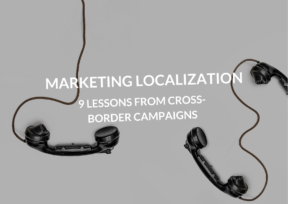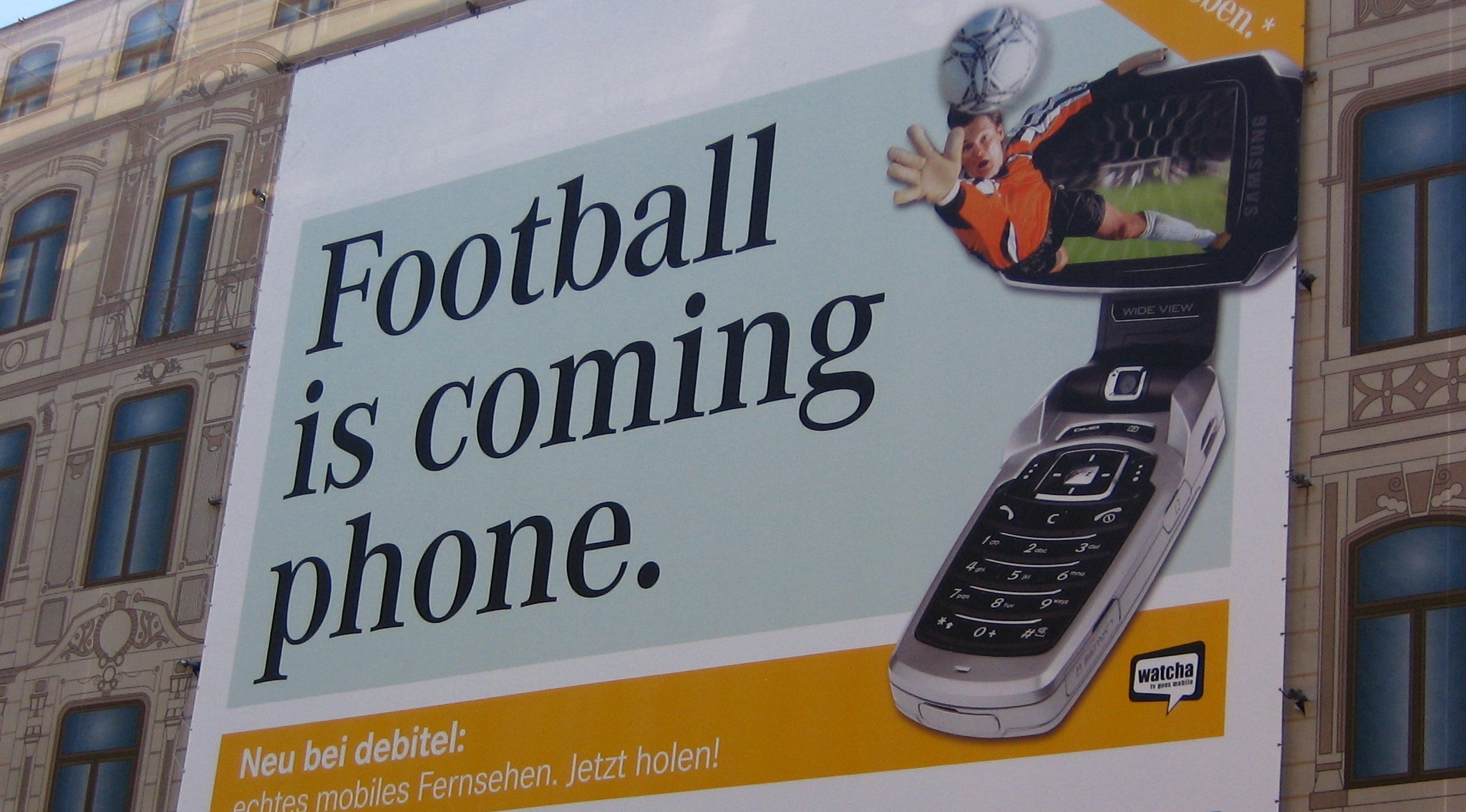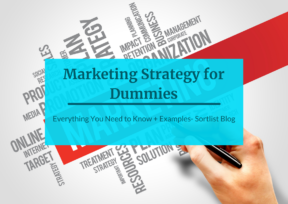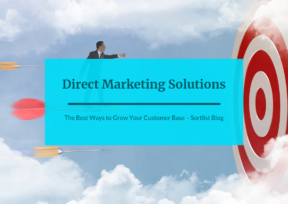
Marketing Localization in 9 Steps: Lessons From Cross-Border Campaigns
Last update: 22 December 2021 at 10:14 am
For any brand, creating a strong marketing strategy and stand-out advertising is a difficult craft. But to cross borders, marketing localization is fundamental. At SWC Partnership throughout the years we’ve helped many clients build businesses globally through localization. And fundamental is ensuring that their marketing strategyworks just as well in their new county as in their current one.
When thinking “how do I localize my marketing?” you’ll need to consider:
- The cultural differences that span the different territories when you’re looking to engage a foreign target audience..
- Understanding how the potential new customers’ purchasing habits may differ.
- How your brand image might be perceived differently when not in your home country.
- How your communications across all channels could be received from a design, copy and tonal point of view.
- That your new market will be very different to the original. Which means your marketing and communications strategy needs to be reworked for best results.
So here are some lessons, distilled into 7 easy steps. A field guide capturing your new market while staying true to your brand ethos.
What is Marketing Localization?
Marketing localization is part of an overall localization strategy focused on converting your current communication strategy and marketing content across language, tonality, imagery and creative. This is to ensure it appeals to and engages with a foreign market’s social and cultural norms.
This means when looking to expand your business and embarking on local marketing in another country, simply translating your adverts from one language to another won’t work.
Marketing localization is far more than this. You need to think about not only the words and images, but also the expression, tonality, inference, emotions – everything that you’d probably take for granted in your current marketing. Then you need to re-write it for your new target market.
This counts, not just for their language, but in a way that’s culturally relevant, so that you capture the attention of your new audience in the same way you would at home. Transcreation, not translation, is the name of the game.


Marketing Localization in Practice
The key is to hit the sweet spot of placing the right marketing content on exactly the right channels at the right time, using perfect messaging that resonates with the audience and stunning design that catches their eye – all in a way that increases your brand awareness AND pulls in the sales.
It’s easy then, to think that when you’ve cracked it, you can simply take that magic formula and roll it out across other territories. You can sit back and wait for those new markets to engage with your products and watch those new customers increase sales.
The problem is though, that marketing localization doesn’t really work like that. Which is a shame, because if it did, your marketing efforts to new target markets would take – well – no effort at all….
How to Get Started
The best starting point is to take a step back and look at the country you’re currently marketing to, and the country you’re looking to target.
Then do your market research. Your local competitors currently sell to your new international customers. So understanding what marketing has been successful in your home country and how that can – or can’t – translate into your new target market is key to success.
Sound daunting? It’s not.
How Do I Localize My Marketing?
Using local marketing teams to help with localization services can be invaluable here. They understand the target market, speak the target language natively, can help with website localization, have access to local search engines and help you build great brand awareness from the beginning.
Additionally, if you bring them in at the start of your journey, they can also offer ‘on the ground’ advice on how to effectively speak to your new audience and reach your marketing goals.

As we’ve already seen, global audiences from an international market need a different marketing approach due to cultural differences. Your marketing localization, therefore, needs to be planned clearly and concisely, taking into account the nuances you’ve identified across the world of business and also with your customer base.
What Not to Do!
It’s easy to jump in with marketing campaigns ready-made for a different target market – mostly because the adverts are already there. Just switch out the copy to the native language! Go on – paste it into google translate – it’ll be fine! Everyone sees images the same way. That man in the glasses is great -he’s clearly universal!
Except execution is the last place you should be starting. Let’s assume that you’re in the USA and are looking to break into Europe; Germany to be specific.
On the surface, the US and German cultures aren’t a million miles apart – both progressive in business, forward-thinking and open to evolving. However, from a business perspective, they often have a very different approach.
So what might those differences look like? How do your current marketing campaigns need to change to appeal to your new international audiences.
It’s time to take a deeper look into the 7 steps to marketing localization.
Step #1: Changing Creative Between Regions
The examples below show how creative for the same BMW product has been targeted at the two different audiences.


Both adverts are for the same car, but there are several changes which have been made to appeal to each different target audience. The car colour is dark and its angle in the German creative is ‘on the move’, up close and detail focussed. Tones are muted, with grey, white and black being the dominant palette.
In the light and bright American advert, the colour of the car matches the sky, the vehicle is looking onto a long and winding road surrounded by open snowy spaces – the epitome of the American open road.
The headlines too are different, with the German creative directly highlighting the precise amount of snowfall; the USA advert gets a more emotive stance.
A detailed analysis of the differences between BMW adverts from the USA and Germany shows that in Germany they tend to focus mostly on informing. They focus on the car’s quality, its added value and its technology. Meanwhile in the USA, their advertising tends towards the masculine and individualistic.
Seems like BMW’s marketing teams have been looking at their audiences as a good starting point prior to their marketing localization….
Another example of USA to Germany advertising
To take another case study, SWC Partnership also work with a USA based digital manufacturing software solution client called aPriori. They were looking to launch in Germany. So we worked alongside our German arm to ensure that transcreation and marketing localization into the German market was spot on.
The ultimate aim of all activity was to take market share from the competition and increase sales within the region. So we considered all activity from creative to digital marketing to make sure that we got it right from the ground up.

Essentially, our belief is that foreign consumers (our German target audience) believe a brand (our American client, aPriori) cares about its customers and their needs when that brand considers the cultural and social nuances of their country, and creates specific, customized advertising and marketing campaigns.

Step #2: Checking Your Product Categories
Some questions to ask yourself in this step:
Were they easy to understand and did they translate well to the new market? Did we need to supplement information by directing potential customers to other resources that would resonate better?
Answers to these questions often provide valuable insight into whether or not your work in localizing your product categories is complete.
Step #3: Localizing Across Digital and Print
Through market research and conversations with our local teams, we knew that Germans reacted better to more informative yet formal adverts. Heavier text is ok as long as what was written was relevant and useful. And we needed to focus more strongly on product features.
We also wanted to make sure we spoke the same language as our audience across all of our communications to ensure the best response. So we asked ourselves – were the people featured in the current USA creative ‘right’ and would they resonate?
Did they look ‘real’ and representative of these new international audiences? Did the colour and design of the creative work for the German market? Was the messaging direct and to the point, or too emotional and ‘American’? Did we need to revise headlines or body copy keeping the tone but changing the inference? And was there enough ‘proof of concept’ for our new pragmatic audience to want to buy?
Step #4: Website Localization
Despite many Germans being multilingual, studies show they still strongly prefer to read (and buy) in their native language.
As such, it was recognized that the German version of the site needed to be more than landing pages and more than a partial localization of the current USA site for aPriori to get the best results.
So our local team decided to not only transcreate copy. But we also created a bespoke USA / German style guide to ensure brand cohesiveness from country to country. This helped grab that all-important market share and hit those marketing goals.
Step #5: SEO Localization
Search was absolutely key to getting aPriori’s strategy when doing business in Germany. When simply using the English language, SEO is easy to handle.
In the world of SEO, language matters. Look at the difference between a simple search such as “Marketing” in Germany and the USA:


So it’s clear that in other languages – such as German – SEO needs to be considered slightly differently. So we pondered umlauts and compound nouns. These are everyday occurrences German, but they can confuse search engines and skew their results.
Step #6: Social Media
Social media offers great additional touchpoints to any digital marketing strategy. But was what was being posted in the USA relevant for the German audience? And were our ads helping us achieve aPriori’s German marketing goals?
What more could social media offer in a country where the company has limited brand authority? Were there different social media channels in Germany that aPriori should be using? (The answer to that last question is yes, we trialled Xing and LinkedIn for a while – a good example of how taking local advice can reap rewards).
Step #7: Checking Local Regulation
Double-checking the basics takes work too. For example, we knew the regulation of German advertising and what is allowed differs from the USA, so we made sure to check all new copy with our local teams.
Data laws are also different in this market. Added to this, German customers are more anxious about how their personal information is used and stored, so we took this into consideration when planning marketing content.
We find that covering as many bases as you can makes your local marketing efforts work just that little bit better.
Step #8: Differences Doing Business
Germans are formal, straight talking and incredibly direct compared the more relaxed, diplomatic approach those from the USA take. They’re also discussion-based and frankly open. Telling your boss openly that they’re wrong is acceptable in Germany – not so much in the USA….

Following on from this direct approach, Germans are all about business planning – all relevant facts are collated first and then discussed in order to define a solution. The Americans usually already have a defined course of action (normally the quickest solution to the problem) which is implemented immediately and changed organically if needed.
Two very different approaches, but points that are key to understand if you’re looking to promote and conduct your business in a foreign country. For example, knowing that Germans are detail-oriented in business can help to tweak your marketing campaigns to appeal to this trait.
As such, having local experts who understand the local culture and target language can really pay dividends. And entering new local markets using a localization team can ensure your sales and marketing efforts reap rewards.
Step # 9: Thinking About Your Customers
When breaking into foreign markets, it’s also essential to put yourself into your customer’s shoes and see things from their point of view.
Your marketing materials need to speak to them in the right tone and with the right design. This allows you to cut through the competitors and get those all-important new consumers to pay attention to you, your products and services. As such, understanding key similarities and differences between your current market and new territory can make all the difference.
Consumer behaviour across boundaries
Looking at the US and Germany again, like their business counterparts, German consumers are far more straight-talking than those in the USA. They want information that’s short and straight to the point. So get your key points over quickly and make your product descriptions exact.
Are the Germans really so direct? Well, let them speak for themselves…
In the US, customers prefer a softer tone, more conversational with the occasional sugar-coating to entice them to buy. When it comes to selling, Americans are wary of cold calling, and you’ll need to pull out all of the stops to keep their interest.
Germans, on the other hand aren’t as used to cold callers. So you may find a different reception; open and positive. It’s all about knowing your target market.
Purchasing-wise, Germans are just as happy to buy online as USA consumers are. But make sure you take note of your address – foreign shipping is not trusted. Also, bank transfers are still relatively normal in Germany so make sure that’s an option alongside credit cards.
Any product or service reviews you can link to will also do well for both regions. Everyone loves to know that they’re buying quality!
Finally, when you’ve closed the sale, make sure you deliver to your German market on time. There’s nothing they dislike more than a late deal. Also make sure that your customer service and after sales help is up to scratch in both countries – Germans especially can become loyal, repeat customers if you get the follow-up right.
Marketing Localization: The Key to Globalization
Foreign consumers believe a brand cares about its customers and their needs when that brand considers the cultural and social nuances of their country, and creates specific, customized campaigns.
It would be difficult to write the ultimate guide to marketing localization. There are many, many social and cultural nuances across different markets to take into consideration.
Indeed, just concentrating on two counties, the USA and Germany, it’s clear to see that marketing localization is as much an art as it is a science. As such having local marketing teams who can help you plan and execute your marketing within your desired territory are key to success.
About SWC Partnership
SWC Partnership are experts expanding into foreign markets. Long experience of creating pertinent and relevant marketing campaigns that span countries, have resulted in a tried and tested method of creating localization strategies. Not everyone across the globe sees things in the same way, and that other cultures can, in reality, subvert expectations.







